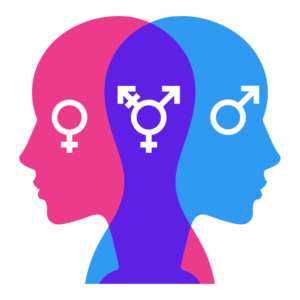The world and society are no longer confined to the binary; we are free to think creatively, passionately, and no longer constrained to antiquated ideas about gender. Instead society accepts people for who they are and can exist in non-binary, genderless, transgender, or genderfluid ways. Whether we are in the 2SLGBTQIA+ (Two Spirit, Lesbian, Gay, Bisexual, Transgender, Queer/Questioning, Intersexual, Asexual, and more) community or an ally it is our responsibility to use proper gender identity terms to show respect and acceptance.
Whether we are in the 2SLGBTQIA+ (Two Spirit, Lesbian, Gay, Bisexual, Transgender, Queer/Questioning, Intersexual, Asexual, and more) community or an ally it is our responsibility to use proper gender identity terms to show respect and acceptance.
To be an ally and demonstrate that courtesy to our fellow humans, understanding the correct terms to use is a vital step forward. Included are a few definitions from NPR journalist Laurel Wamsley to clarify the sometimes confusing gender landscape.
- Sex = biological status, typically assigned at birth on the basis of internal/external anatomy, generally categorized as male, female, or intersex.
- Gender = defined by social construct of norms, behaviors and roles that varies within societies and overtime, often categorized as male, female, or nonbinary.
- Gender Identity = internal sense of self and gender, which is not outwardly visible, does not always align with the sex assigned at birth.
- Gender Expression = external expression of gender, through behavior, clothing, or other characteristics.
- Cisgender or Cis = an adjective that is used when a person’s gender identity aligns with the sex assigned at birth.
- Transgender or Trans = an adjective that is used when a person’s gender identity differs from the sex assigned at birth.
- Nonbinary = a term that can be used to describe oneself if their gender identity doesn’t fit into the category of male or female. There is a wide range of terms that can be used such as; genderqueer, genderfluid, gender-expansive (might also be associated with the gender binary), and more.
- Agender = an adjective for a person who does not identity as any gender
- Gender Dysphoria = the psychological distress that results from an incongruence between one’s sex assigned at birth and gender identity.
- Sexual Orientation = the physical, romantic and/or emotional attraction to members of the same and/or other genders, including lesbian, gay, bi, pan, and straight orientations. This is completely separate from gender identity and is not based on specific sexual experiences or romantic relationships.
- Intersex = general term to describe people with reproductive anatomy, chromosomes, or hormones that don’t fit the binary of male and female. This is based on biology not gender identity.
Actions to take:
- When meeting someone new, don’t assume their pronouns, instead lead by sharing yours and/or asking theirs.
- Try to leave grammar at the door and show acceptance by using They/Them pronouns
- Normalize sharing pronouns in social settings by sharing yours and writing them on name tags, email signatures, etc.
- Never assume someone else’s gender identity
- Never ask someone what kind of reproductive organs they have
- If there are gender neutral bathrooms consider using them instead of a gendered option
- Look for future announcements from the IACT team with calls for action to support legislative efforts at the Local, State, and National level to help the 2SLGBTQIA+ community
- Be prepared to act, to stand up in support of those most vulnerable
Additional Reading Materials:
A Guide To Gender Identity Terms (article)
Pronoun Guide (article)
Sex Assigned at Birth and Gender Identity: What Is The Difference? (Video)
What Does it Mean to be Genderfluid? (Video)
A quick & easy guide to they/them pronouns by Archie Bongiovanni, Tristan Jimerson (Short Graphic Novel)
A quick & easy guide to queer & trans identities by Mady G and J.R. Zuckerberg (Short Graphic Novel)
Extensive resource list and links from Youth Outlook (website)
